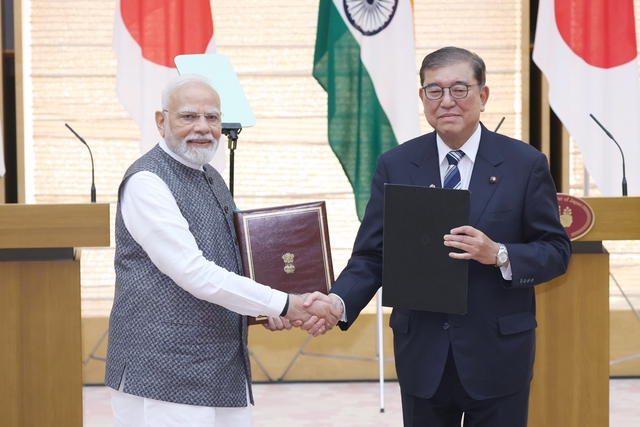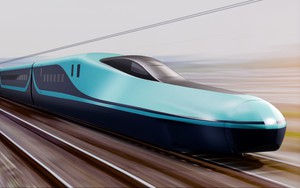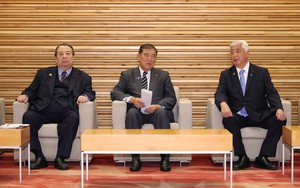
Japanese Prime Minister Shigeru Ishiba (R) and Indian Prime Minister Narendra Modi shake hands at a meeting in Tokyo, Japan on August 29. Photo: Jiji Press
At a meeting in Tokyo in late August, Japanese Prime Minister Shigeru Ishiba and his Indian counterpart, Narendra Modi, agreed to cooperate for the introduction of newly developed Japanese trains for the Indian railway, which is set to adopt Japan's Shinkansen technology.
The Japanese side has proposed that the trains be introduced in the early 2030s.
Indian Minister of Railways Ashwini Vaishnaw said Saturday that the 500-kilometer high-speed railway, linking Mumbai and Ahmedabad, also western India, is expected to fully open by 2029.
The Indian side is calling on Japan to move up the delivery of the E10 series trains apparently based on the prospect.
However, there may be many challenges, including whether a Japanese-style railway signal system necessary for the operations of the E10 trains will be installed in time for the start of their services.
The Indian government aims to partially open the Mumbai-Ahmedabad rail link in 2027 using India-made trains.
In line with the partial opening, the Japanese side plans to provide India with one inspection train set from each of JR East's E3 and E5 Shinkansen series free of charge.
The trains will be equipped with devices to check tracks and overhead wires.





Max: 1500 characters
There are no comments yet. Be the first to comment.